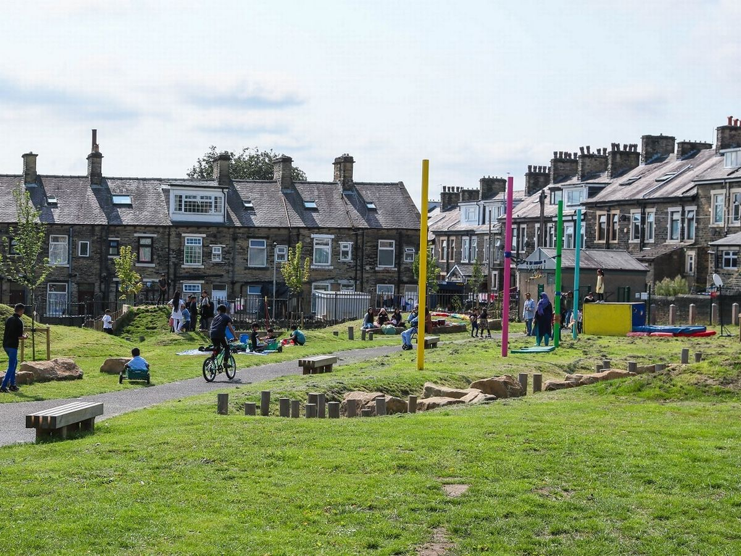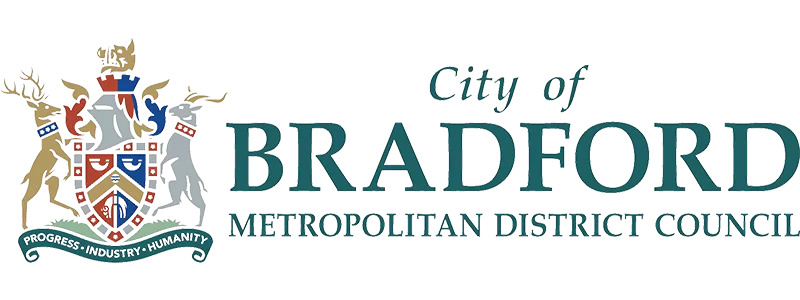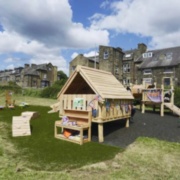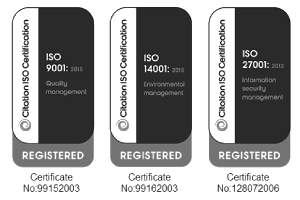Bradford's greenspaces partnership
Bradford is a great northern city located within a wider Metropolitan District with a diverse population of over half a million. The district is almost two-thirds rural, with large towns, smaller market towns and villages, set within the landscape of the southern Pennine hills. It is a beautiful place, with a stunning architectural heritage, home to enterprising and creative people, and strong and productive businesses.
Almost a quarter of our District’s population is aged under 16, and one in four people identify as British of Asian origin, and our communities are affected by significant public health inequalities. Women born in the most deprived areas can expect to live on average nine years less than the UK average and for men, the figure is 11 years less. Urban inner-city wards have the lowest life expectancies, whereas the outer rural wards have the highest life expectancies.
In Bradford, more people are overweight, exercise less and eat less fresh fruit and vegetables than the national average. However, personal behaviour is only one aspect of our health and well-being, and not always the most fundamental. Well-being is also shaped and constrained by, the quality of their homes, and the local environment.
The quality and accessibility of public transport and infrastructure to support active modes of travel support or constrain people’s ability to be physically active every day. Good access to green blue infrastructure also supports physical activity and helps to reduce social isolation by providing places and ways to see people every day.

Bradford is looking to remove the barriers in the urban environment that detract from community health and well-being by enhancing and expanding the districts creating blue-green infrastructure.
Bradford envisions a successful healthy city with a distinctive centre where the urban population can access an attractive environment. Our urban landscape needs to be transformed to enable sustainable modes of transport that are attractive to all communities and provide economic opportunities to residents. People will be at the heart of this transformation. Innovative design and delivery will be key, as well as collaborative working and capacity building to ensure a holistic shaping of the city’s future. It will be a bottom-up approach starting with people.
The Landscape Design and Conservation Team within Bradford Council are a small team of dedicated Landscape Architects inspired by the environment we live in and our community partners to create healthy green spaces. The approach of the team has increasingly focussed on delivering a range of benefits through the development of the district Blue Green Infrastructure. Given the issues with health in the district delivery of improved health outcomes has become a key driver of projects.
Working with partner organisations ensures our design approach is consistent and encompasses the latest thinking on public health and open space. As a result, the team have designed and delivered and range of blue-green infrastructure projects which place health at the heart of the design process.
Born in Bradford is one of the largest research studies in the World, tracking the lives of over 30,000 Bradfordians to find out what influences the health and wellbeing of families. We use the findings to develop new and practical ways to work with families and health professionals to improve the health and wellbeing of our communities. Parts of the research conducted by the Bradford Institute for Health Research have confirmed that the local environment has a large impact on childhood development and public health outcomes. Family play in green spaces from an early age is a critical part of childhood development and overall health.
As a nation, we are leading increasingly sedentary lifestyles which is having a detrimental effect on our health and wellbeing.
The link to community health research being conducted by the Bradford Institute for Health Research through Born In Bradford represents a unique relationship between scientific analysis of the determinants of public health in our urban environment and the delivery of green spaces. The effect green space interventions are making on the health and wellbeing of our citizens is being measured, and then models for how to achieve the best public health outcomes and sustainably deliver projects are being created. Bradford is helping to build a model strategy for how to achieve better public health outcomes through the considered use of blue-green infrastructure.
.jpg)
Collectively our green space intervention projects use co-design and co-creation to deliver community engagement and a sense of ownership in what is being achieved, as well as empowering people with the knowledge of how active lifestyles in the great outdoors can help their long-term health.
Creative consultations give local people the opportunity to talk, share ideas and make friends - allowing community groups to be quite creative and hands-on.
In Bradford, we are putting our children, especially girls at the heart of this work, by using innovative design, delivery and policy, as well as working collaboratively and building capacity to ensure that the community and stakeholders are able to help shape it. A bottom-up approach that starts and ends with our communities. It’s also an opportunity for communities to ‘give something back’, and more importantly, to build a lifelong relationship with outdoor spaces.
We are changing behaviour by understanding the capability of our communities, what motivates them, and for those delivering outdoor spaces that promote active lifestyles, what opportunities can be created. We are building confidence by creating ownership and empowerment to encourage behavioural change by enabling local leaders/role models.
We find out what matters to our communities and how will spaces be used. We are also building resilience in the community from a young age, linking to other local services.
Regular engagement starts creating pride in where we live.
It’s important to find the right sites - underused sites with potential. Sites that connect, where we can deliver a series of linked green spaces and routes to encourage active play/travel.
Better Start Bradford works with expectant families and families with children aged 0-3 in South Bradford to help give children the best possible start in life. To do this Better Start developed and commissioned a range of innovative projects with funding from the National Lottery Community Fund.
The Better Place project is identifying and overseeing a range of improvements to local parks and open spaces to provide a healthier and happier environment for babies, young children and families.
To support the delivery of Better Place, the Landscape Design and Conservation Team have placed a Landscape Architect who is helping to project manage the delivery of projects within the Better Start Bradford Team.
JU:MP (Join Us: Move. Play.) is the Bradford Local Delivery Pilot, led by Active Bradford and funded by Sport England, that aims to help children and families in North Bradford to be more active. Movement and play doesn’t only improve children’s physical health, but also their emotional wellbeing, meaning that children are more confident and happier.
The Landscape Design and Conservation Team have engaged with campaigns such as Making Space for Girls, which is working for parks and public spaces to be designed for girls and young women, not just boys and young men, and ensuring that the voices of girls and young women are heard in the planning process.
Well Bradford is a community health programme hosted by Bradford Teaching Hospitals NHS Foundation Trust to re-energise and reconnect links between our hospitals and the wider community. Well Bradford is in the unique position of being able to turn some of that research into reality by improving and creating new green spaces so communities have a focal point to live healthier lives.
The Bradford Council Plan has established priorities for the District including ‘Better health, better lives’, ‘Safe, strong and active communities’, ‘A sustainable district’, and ‘An enabling council’. One of the principles that underpin the Council Plan is that “we will work to make it easier for people in the district to adopt healthier lifestyles”.
Bradford Council’s Landscape Design and Conservation Team strongly believe that projects co-created and co-designed with the local community enable a sense of agency and ownership. With our partners, we are seeking out opportunities to practice this vision, and to construct green spaces from wasteland that encourages social interaction and outdoor activity to support healthier lifestyles and social cohesion.
• Understanding our community and its needs. Working with local schools, community groups, mosques and madrassas. A Multi-agency approach and working with existing and new organisations in the area.
• Listening to and involving people about what matters to them
• Enhance the streets and neighbourhoods by increasing greenery and nature
• Make it easier for people to understand routes into and around the neighbourhood from nearby residential areas
• Increasing urban green and blue infrastructure
• Increasing people’s ability to walk short journeys by improving routes
• Improving safety at crossings and making crossing points and key routes arena and more attractive
• Increasing accessibility by providing more places to stop and rest on key routes
• Making our urban environments safer and more ‘playable’ to encourage families to go outside and stay longer
In recognition of the work Bradford Council’s Landscape Design and Conservation Team has been delivering, we have been awarded the Landscape Institute Award for Excellence in Public Health and Wellbeing 2023 and the President’s Award for the Best Landscape Scheme of the Year 2023.

Saira spoke at APSE’s Parks Seminar on 14 March, her presentation is available to download via the APSE website.


.png)



.png)